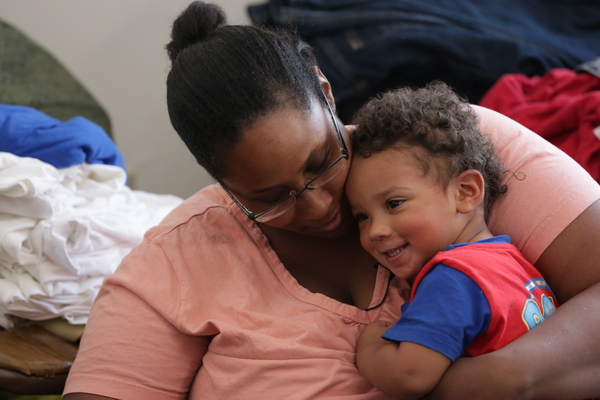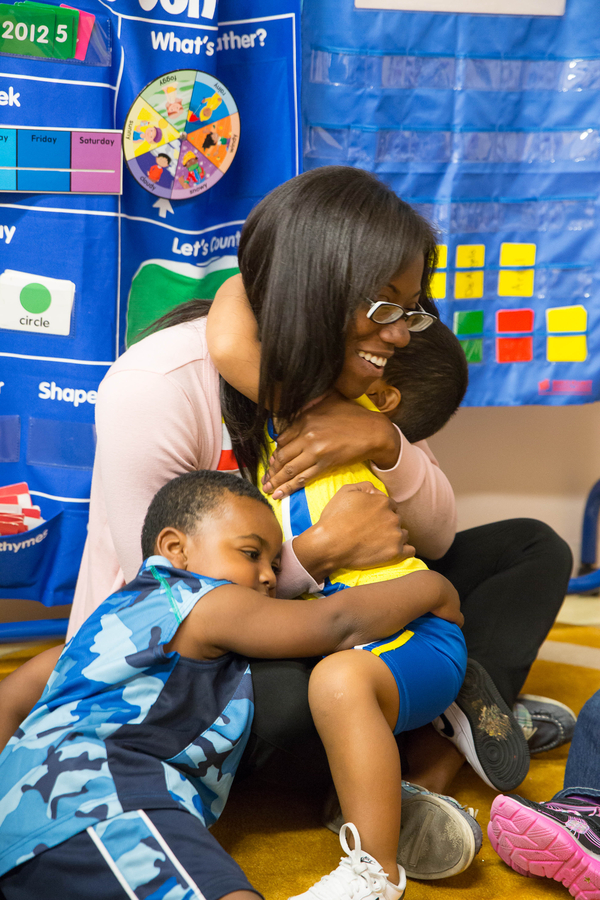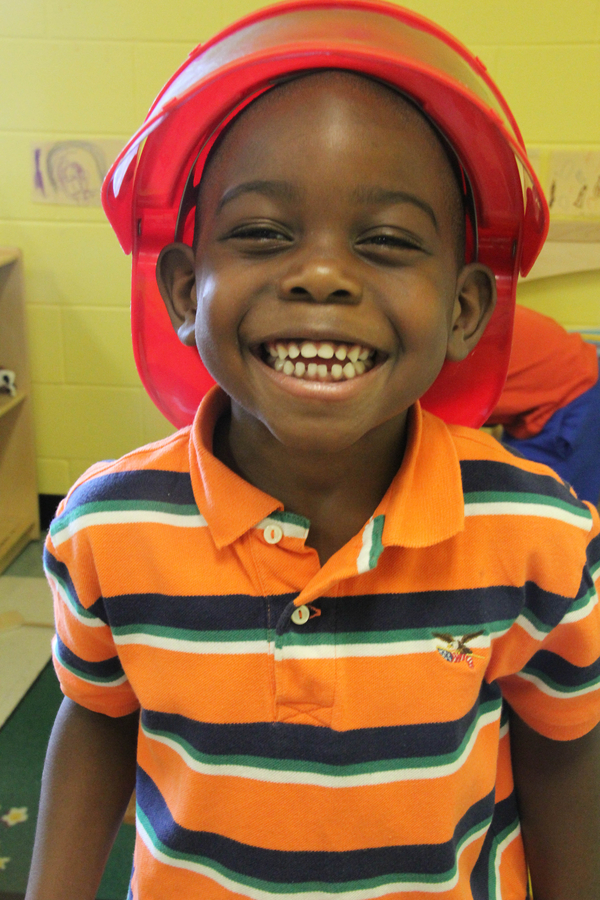 From birth, children naturally seek quality social interactions with their parents, peers, caregivers, and educators — people like home visitors, family child care providers, and teachers. These positive, consistent, and nurturing relationships foster trust and emotional security. They also support engagement, learning, and other positive health and academic outcomes that can continue into adulthood. As children observe and interact with familiar adults and their peers, they learn how to express and interpret a range of emotions.
From birth, children naturally seek quality social interactions with their parents, peers, caregivers, and educators — people like home visitors, family child care providers, and teachers. These positive, consistent, and nurturing relationships foster trust and emotional security. They also support engagement, learning, and other positive health and academic outcomes that can continue into adulthood. As children observe and interact with familiar adults and their peers, they learn how to express and interpret a range of emotions.
The first five years of a child’s life are a very important time for learning how to manage and express behavior and emotions that can help build strong social skills and relationships. When children feel confident about themselves and their abilities, they engage more fully in learning opportunities and interactions with adults and their peers. This positive sense of identity and belonging increases children’s self-confidence and willingness to take part in learning and risk-taking, skills that are vital to school readiness.
Why Promoting Social and Emotional Development Matters
Current research tells us that African American boys’ social and emotional development is not fostered in the same way as their white peers. This negatively affects positive school experiences and the development of social and emotional skills.
- Young children depend on the support of safe, nurturing adults to model and teach social and emotional skills. Developing new skills can be challenging and complex and often happens in inconsistent ways. So, while one day a child might be able to put their hand out or use words to ask for a turn, the next day the same child might grab the toy without asking. Understanding the developmental progress of skills can stop biases we may have about children’s behavior and skills.
- African American boys are seen as less childlike than their white peers. The adultification of African American boys creates a bias that their behavior is intentional and malicious. Instead, they are children with developing emotional and behavior self-regulation skills like their white peers.
- Black boys are nurtured less and disciplined more. Studies show that educators are less likely to form strong relationships with African American boys. These boys receive more discipline and are suspended and expelled at a higher rate. Such experiences can have a lasting effect and negatively affect the development of social and emotional skills.
- African American boys develop their sense of identity in the context of a society that often undervalues them. They are often seen through negative stereotypes, assumptions, and expectations of others.
- A Yale Child Center study found that when looking for disruptive behaviors, preschool teachers spent more time observing Black children than white children. Implicit bias affected the teacher’s beliefs and expectations about the social and emotional skills and development of Black children. The study suggests that a step toward addressing this inconsistency is to be aware that the bias exists and its impact on children.
- The extent to which educational professionals attend to African American boys, invest resources in them, and view them as valued contributors is not the same when compared to their non-Black peers. It is in this challenging setting that young African American boys try to develop a sense of worth, identity, and belonging.

Reflect
Many adults view African American boys as older than their actual age; this is known as adultification. Ask yourself, “Am I holding African American boys to different standards of behavior than other children, and if so, why and how?” This reflection helps us to understand the impact of our own beliefs or biases.
Think about an interaction you have had with a young African American boy that challenged you.
- Why were you feeling challenged?
- What strategies did you use that showed respect and understanding of his age, gender, and race?
- How did you support his developmental stage of social and emotional growth?
- Are there other strategies you might like to try next time?
Celebrate Black Boy Joy!
Celebrating Black boy joy is about loving Blackness and making sure that Black boys can be happy, whole, and vulnerable children in a learning space, without being treated like an adult.

Practices to Promote Social and Emotional Development
Discover practices to promote social and emotional development and self-regulation skills in young African American boys.
Social and Emotional Development
Nurture emotional connection.
- Sometimes our biases get in the way of remembering that African American boys also need to be cuddled, held, and responded to with kind words and a positive attitude. When you are responsive to these needs, you model social and emotional skills that children learn and use themselves.
- Talk with families about the importance of the emotional connection between parent and child. Discuss how family members can express care for one another.
Talk with boys about their emotions and help them label these.
- Sometimes when boys appear to be angry, they have feelings of pain or fear. They may perceive that the expression of anger is more socially acceptable.
- Talk with families about developmentally appropriate ways to label and discuss emotions. Learn from families about how they discuss and label emotions with their child.
- For infants and toddlers, name their emotions when you see them being expressed. Say, “It looks like you feel happy! I see the big smile on your face.” Or, “I hear you crying, and your face looks sad. I’ll hold you right here on my lap to help you feel better.”
- For preschoolers, acknowledge their emotions and behaviors and ask questions to help them name their emotions. For example, “Oh, I hear yelling, and your face is scrunching up. You look like you might feel frustrated or angry.” Or “Oh, I hear yelling, and your face is scrunching up. Can you tell me how you are feeling?”
Diversify the images, books, and objects that children interact with.
- Consider how some current materials might reinforce negative stereotypes. For example, are African American boys or men only portrayed as athletes in pictures and stories? Offering a wider range of positive pictures and stories can have a good effect on how African American boys value themselves in learning environments.
- Talk with families about the books, photos, and other images that are in the home and how these influence a developing sense of identity.
Create experiences for African American boys with African American men.
- Consider partnering with local fraternities, faith communities, and other community groups to find special guests who can spend time teaching new skills or will support learning through positive interactions.
Emotional and Behavioral Self-regulation
Respond to young African American boys’ behavior with an understanding of their “boyness” and how emotions are expressed.
- Often, boys need more time to process their feelings, and they may need support to emotionally regulate their responses to the situation. Support African American boys as they learn about emotional regulation and impulse control.
- Move close to a child who is struggling. Offer calm and kind words of support. Wait. Help to name emotions and ask age-appropriate questions to problem-solve. Responsive caregiving creates safety for young children.
- During home visits, model for parents, or prompt and guide them on how to support their child’s emotional regulation.
Before redirecting behavior, pause to ask why you are redirecting the behavior. Practice self-awareness and think about why the behavior is challenging for you. Is redirection really needed? Consider if the behavior is in line with expectations for the child’s age.
- If an African American boy needs redirection support, talk one-on-one at a close but comfortable distance rather than raising your voice to be heard across the room.
- Talk with families about their approach to redirecting behavior and how their child responds. Discuss developmentally appropriate expectations for young children’s behavior with families.
Learn from the child’s family how he processes and regulates emotions, how his family members typically respond, and how they would like him to communicate his feelings. Work together with the family to develop a plan for continued social and emotional growth.
Consider the influence of the adultification of young African American boys to ask yourself if emotional and behavioral expectations are developmentally appropriate. Individualize how you guide a child’s emerging self-regulation skills to give responsive and nurturing support.
See it in Action
The videos in this playlist are examples of education staff using practices to support social and emotional relationships. As you watch the videos, try to identify the practices education staff use. How do they promote belonging? How did they support relationships amongst the children? What practices do you already use? Think about practices to implement in your learning environment. After watching the videos, you’ll have an opportunity to plan for, try out, and reflect on using the strategy of promoting social and emotional relationships.
Loading...
Caregiver Comfort
Caregiver Comfort
View the transcript
Social Emotional: Caregiver Comfort
Teacher: Oh!
Boy: [Crying]
Teacher: OK. All right. Come here. All right. OK.
Boy: [Continues crying]
Teacher: Look, your friend is... Thank you, Zariah. She wants to give you a hug. That's very nice of you, sweetheart. Your friend is trying to take care of you. She's trying to take care of you. All right, Zariah. It's OK. But I really appreciate you trying to make sure your friend feels OK. Would you like an ice pack, my friend? OK. Get the pencil.
Boy: [Continues crying]
Teacher: All right. It's OK. I know. That must have really hurt. That was a hard ... Let's put this back so no one else hits their head, OK? All right. Such a big boy. May I have my pen back, ma'am? For teacher's hands only. Where's your pencil? OK.
Teacher 2: Doreen, since we're done in the bathroom, let's go over here.
Close
Providing comfort and care in learning environments creates safety and fosters positive social and emotional skills. How will you provide comfort and care to the African American boys in your learning environment?

Try It!
Download the Try It! worksheet and choose one practice to focus on for one month. Use the prompts in the worksheet to thoughtfully plan how you will use the practice. The worksheet includes prompts for reflection after using the practice for one month.
Deepen Your Learning
Use these resources to improve your knowledge and understanding of social emotional development in children.
Connections to Head Start Standards, Frameworks, and Principles
Many of the Head Start practices outlined below support the school readiness and success of young African American boys. Keep your learning setting in mind when considering how you already implement these practices and how you can more closely align to improve your existing teaching practices.
Head Start Program Performance Standards
Head Start Early Learning Outcomes Framework
Below are example practices from the ELOF Effective Practice Guides that are especially beneficial for young African American boys.
Multicultural Principles for Early Childhood Leaders
Implementation of the multicultural principles honors the cultural diversity of children, families, and communities served in Head Start programs.
Last Updated: June 11, 2024

 From birth, children naturally seek quality social interactions with their parents, peers, caregivers, and educators — people like home visitors, family child care providers, and teachers. These positive, consistent, and nurturing relationships foster trust and emotional security. They also support engagement, learning, and other positive health and academic outcomes that can continue into adulthood. As children observe and interact with familiar adults and their peers, they learn how to express and interpret a range of emotions.
From birth, children naturally seek quality social interactions with their parents, peers, caregivers, and educators — people like home visitors, family child care providers, and teachers. These positive, consistent, and nurturing relationships foster trust and emotional security. They also support engagement, learning, and other positive health and academic outcomes that can continue into adulthood. As children observe and interact with familiar adults and their peers, they learn how to express and interpret a range of emotions.
